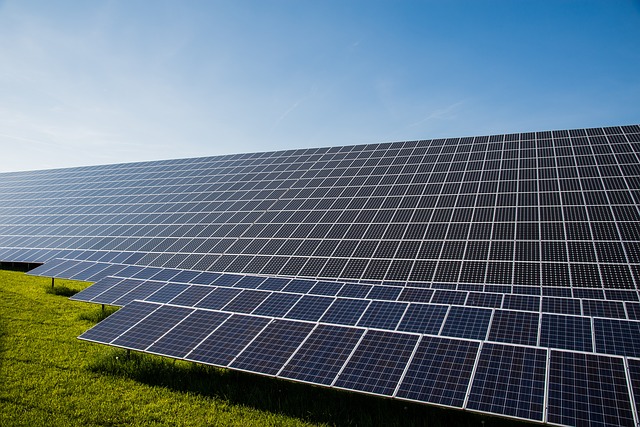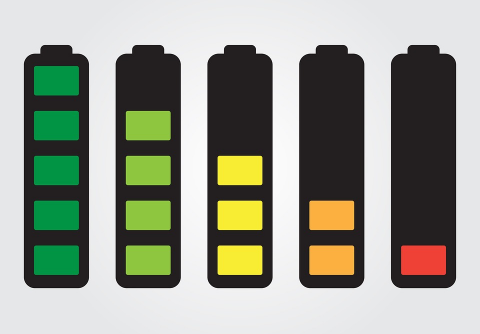Lithium Ion Battery Manufacturing Cost-Price Trend and Chinese Manufacturers
Mar 27, 2020 Pageview:1951
The planet is becoming even more electrified. Not only are developing countries growing their population's availability of electricity, but electrification of existing transport networks is progressing at a rapid rate. In 2040, it is estimated that over half of the cars on the roads will be powered by electricity.
Batteries play a vital role in this process, but in both personal electronics, as well as in transportation and heavy industrial applications, a fairly new form of battery seems to dominate that is lithium ion batteries.
The fact that automotive industry experts and other economic sectors are stimulating the need for electrically powered vehicles does not dispute that. That being the case, car manufacturers strongly believe that the future of passenger vehicles must run on power, that is, on energy. Now, if fully electrified cars are to be found on roads or partially electrified, time and pace of progress should provide answers.
One thing is obvious from now on that it depends entirely on the present and potential prices of lithium ion batteries. It is because lithium ion batteries act as an integral or primary component of electric vehicles such as automobiles, bikes, buses, trucks, etc. The information listed below will inform you more about the cost structure and demand trends of lithium ion batteries. Read on to learn more.
How much does it cost to manufacture a lithium ion battery?
To begin with, the cost of lithium ion batteries is important for you to know that, in the eyes of global car manufacturers, these batteries have created a commendable lead over other batteries. In fact, lithium ion battery, also denoted as secondary cell battery, is essentially rechargeable. In the event of discharge, the lithium ions travel from the negative electrode direction to the ends of positive electrodes, and return when charged.
While these batteries are rechargeable, they also have high levels of energy density and voltage. Identifying the fact that lithium ion batteries are critical for society's transition to use renewable energy sources would be fitting here. Those batteries ' incredible efficiency and output has spurred their need in nearly all sectors.
There's no question about the fact that lithium ion battery chemistry is giving all the other current battery technology a cutting edge competition because of the above stated factors. Experts, globally agree that over 30 years from now the market of such batteries will remain undisruptive.
According to Bloomberg New Energy Finance's report and figures, in 2018 the global average cost of lithium ion batteries amounted to $175 per kWh, which is much lower than the 2010 prices where it soared to $1200 per kWh and thus in the upcoming years, the estimated cost of lithium ion batteries will be decrease and the demand will be increase.
What is the price trend and cost structure of lithium ion battery manufacturing
Some of the major differences in why manufacturers favour a lithium ion battery in electric cars over lithium batteries is that they are rechargeable batteries that therefore provide more versatility and much higher performance. The average prices are dropping at a much faster pace than anticipated due to technological developments and technology upgrades. But predicting the potential costs of lithium ion batteries is a little difficult.
The following are the combined study showing the market structure and demand patterns of the Li ion battery:
The market of a mobile device's lithium ion battery ranges from about $2 to $4, which varies with the device's power which design attributes. The battery price costs up to 2 percent of the mobile's entire output.
The price of a lithium battery used in an electric vehicle ranges from $7000 to $20000; hence, it is one of the electric vehicle's most costly parts.
As stated earlier, in the last ten years, the cost of Li-on battery has fallen by about 80 percent to 85 percent. Currently, the average battery price is around $176/kWh.
The price drop rate could be as high as 50 percent by the end of 2030.
Based on some estimates, by the end of 2040, the rate of reduction will grow to 75 percent.
According to recent reports, the average price of such batteries will fall by as much as $60 per kWh.
Prices are expected to continue to fall even faster than projected prices, largely because of technical advances and other underlying factors.
The reduced costs of lithium ion batteries are necessary to generalize electrification in virtually every industry.
How do you know about Chinese lithium ion battery manufacturers?
The lithium ion battery industry is currently in a phase of high-speed development. The power storage lithium ion battery market, powered by the growth of new energy vehicles and the demand for photovoltaic energy storage, will lead the lithium ion battery industry into a new height, slowly breaking the technological monopoly on high-end products from Japan, South Korea, Europe and America, and achieving the leapfrog production. The Chinese lithium ion battery Enterprise Ranking Analysis Report will examine and evaluate the comprehensive strength of major enterprises in the domestic ranking list and identify typical enterprises, create industry benchmarks and promote healthy development in this field.
According to a Bloomberg NEF report, there were 316 gigawatt-hours (GWh) of global output capacity for lithium cells in early 2019. China is home to 73 percent of this capacity, led by the US, with 12 percent of global capacity far behind in second place.
Market demand is expected to rise robustly by 2025, when Bloomberg NEF expects market demand of 1.211 GWh. US capacity is expected to increase, but slower than global demand. And the U.S. share of global production of lithium cells is expected to decline.
China is taking the same direction with solar panels as it did previously. Although American engineer Russell invented solar cells, today China dominates the global demand for solar panels. Now China's focus is on managing lithium ion battery production around the world.
China has a significant advantage of cheap labour, which has allowed it to dominate many manufacturing sectors. Yet China also has more lithium deposits and much more lithium output than the US. Chinese lithium production in 2018 was 8,000 metric tons, 3rd among all countries, and nearly 10 times the output of U.S. lithium. In 2018, Chinese lithium reserves stood at one million metric tons, almost 30 times the size of the US.
- Prev Article: 18650 Battery Pack Connectors-Definition and Usage
- Next Article: How to Connect Two Lithium-ion Batteries-Connect in Parallel
Leave Message
Hottest Categories
-
Hottest Industry News
-
Latest Industry News












